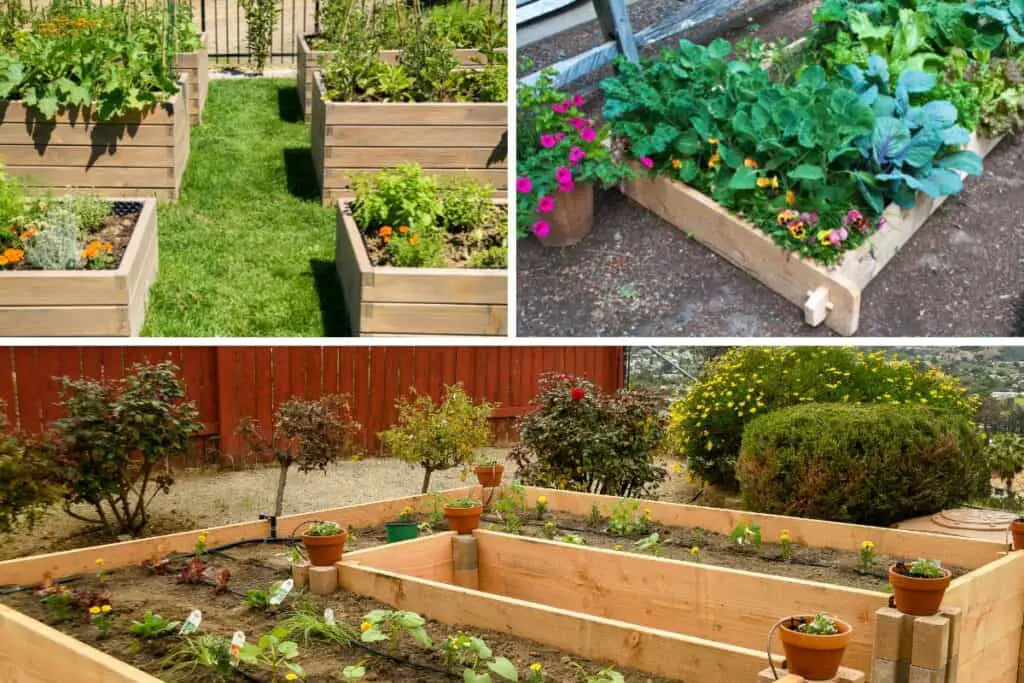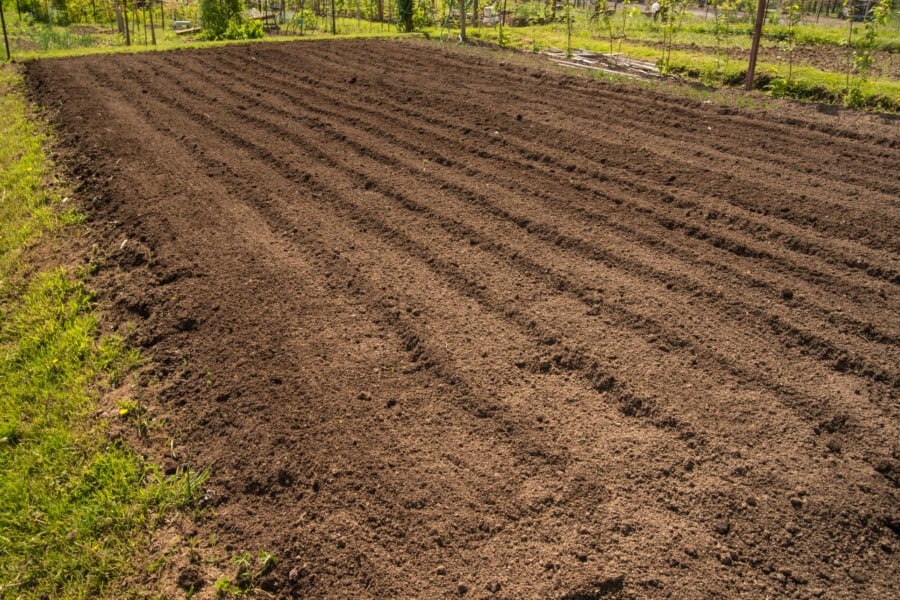Gardening is a rewarding and enjoyable activity that can be pursued by people of all ages. Whether you have a large yard or a small patio, there are many options for creating a manageable garden. In this article, we will explore three important gardening concepts: manageable garden size, planting in-ground and raised bed gardening. By the end of this article Manageable garden size, planting in-ground raised bed, you will have a better understanding of how to create and maintain a successful garden.
What Are the Gardening Basics

Before we dive into the different types of gardening, it’s important to understand some basic gardening concepts. There are three essential elements that plants need to grow: soil, water, and sunlight. Soil is a mixture of organic matter, minerals, and microorganisms that support plant growth. Watering is the act of providing water to plants, which is essential for their survival. Sunlight is light from the sun that is necessary for photosynthesis, the process by which plants convert sunlight into energy.
Planting is the process of placing plants into the soil or other growing medium. When planting, it’s important to choose the right plants for your climate and soil type. Additionally, you’ll want to consider the spacing between plants to ensure that they have enough room to grow.
How to In-Ground Garden
In-ground gardening is a traditional method of gardening in which plants are grown directly in the ground. In order to prepare the soil for planting, you’ll need to remove any weeds and rocks and loosen the soil with a garden fork or tiller. You may also need to add compost or other organic matter to enrich the soil.
Once the soil is prepared, it’s time to plant your seeds or seedlings. When planting, be sure to follow the spacing requirements for your plants. As your plants grow, you’ll need to water them regularly and provide them with proper nutrients.
Maintaining an in-ground garden requires ongoing care and upkeep. This includes watering, weeding, and pruning. It’s important to stay on top of these tasks to ensure the health and productivity of your plants.
How to Raised Bed Garden

Raised bed gardening is a popular method of gardening that involves growing plants in soil that has been elevated above ground level. There are different types of raised beds, each with its own set of benefits and drawbacks. In this cluster, we will discuss raised beds, the benefits of raised beds, and the types of raised beds.
Raised beds, as mentioned, are simply gardens that have been elevated above ground level. They are often constructed using wood, stone, or concrete blocks and can be built to any size or height desired [1]. Benefits of raised bed gardening include fewer weeds, better water retention in areas with super-sandy soil, better drainage in areas with clay soils, more growing space, no soil compaction from human feet, warmer soil earlier in the season, and warmer soil for a longer season [2].
There are different types of raised beds, including standard raised beds, hugelkultur beds, straw bale beds, and lasagna beds. Standard raised beds are the most common type of raised bed and are often constructed using wood or stone. Hugelkultur beds are constructed using logs and other organic materials and are designed to be self-fertilizing. Straw bale beds are constructed using straw bales as the raised bed material, and lasagna beds are constructed using layers of organic materials like leaves and compost [3].
Overall, raised bed gardening can be a great way to grow plants in areas where the soil quality is poor or where space is limited. With the right construction and maintenance, raised beds can provide an excellent growing environment for a wide range of plants.
Conclusion and Final Thoughts 💭
In conclusion, choosing a manageable garden size that suits your needs and abilities is key to successful gardening. Both in-ground and raised bed gardening have their advantages, and the choice largely depends on your specific situation. In-ground gardening can be more budget-friendly and suitable for larger areas, while raised bed gardening offers better drainage, easier soil amendments, and the ability to grow crops in areas where gardening would otherwise be difficult [1]. When planting, it’s important to ensure that your plants have enough soil depth to thrive, with a recommended minimum of 10 inches for most garden crops [3]. With the right planning and execution, both in-ground and raised bed gardening can yield bountiful harvests and provide a rewarding gardening experience.
FAQS
How many vegetables can you plant in a 4×8 raised bed?
The number of vegetables that can be planted in a 4×8 raised bed depends on the size of the plants and the spacing between them. However, a general guideline is to plant vegetables close together for maximum yield, but not so close that they are overcrowded and competing for resources. For example, a 4×8 raised bed can accommodate 16 tomato plants, 32 onion plants, or 48 carrot plants when spaced appropriately [2].
What vegetables go together in a raised bed?
Companion planting can be helpful in determining which vegetables go well together in a raised bed. For example, planting tomatoes, peppers, and eggplants together can create a natural pest deterrent, while planting cucumbers and beans together can provide mutual support. Additionally, planting herbs like basil and parsley near tomatoes can improve their flavor and growth. However, it is important to avoid planting vegetables from the same family in the same bed year after year to prevent soil-borne diseases [2].
What is the optimal size for raised garden beds?
According to deepgreenpermaculture.com, the ideal width of a garden bed is no more than 1.2 meters (4 feet) if it is accessed from both sides, allowing an adult to reach just past the center from any side for optimum accessibility to the gardening area. For garden beds accessed from only one side, the optimal width is 60 centimeters (2 feet), which is half of the recommended width for a two-sided bed [1].
What doesn’t grow well in raised beds?
Although raised beds have many benefits, some crops are not ideal for this type of gardening. Deep-rooted vegetables like corn, as well as large vegetables like pumpkins, may struggle in the confined space of a raised bed. Trees and shrubs should also be avoided as their roots can invade and damage the bed [2].
What is the best size for raised vegetable beds?
The optimal size for a raised vegetable bed depends on the accessibility of the bed. If the bed is accessible from both sides, then it should be no more than 1.2 meters (4 feet) wide. For a bed accessible from only one side, the optimal width is 60 centimeters (2 feet) [1]. However, the length of the bed is variable and can be determined based on available space and personal preference.
How do you arrange vegetables in a raised garden bed?
The arrangement of vegetables in a raised garden bed can depend on personal preference and the type of vegetable being grown. For example, tall plants should be grown on the north side of the bed to avoid shading other plants, while shorter plants can be grown on the south side. It is also important to consider companion planting, where certain plants can benefit each other when grown together. For example, planting tomatoes and basil together can improve the flavor and growth of both plants. Additionally, crop rotation can help prevent soil-borne diseases and ensure the best use of the available space [2].
Latest Posts
- What Types of Lettuces Can You Grow?

- How to Plant Onion Seeds for Maximum Germination

- How to Plant Parsnip Seeds for Maximum Germination

- How to Plant Mushroom Seeds for Maximum Germination

- How to Plant Lettuce Seeds for Maximum Germination

- How to Plant Kale Seeds: A Step-by-Step Guide to Maximum Germination Success!





